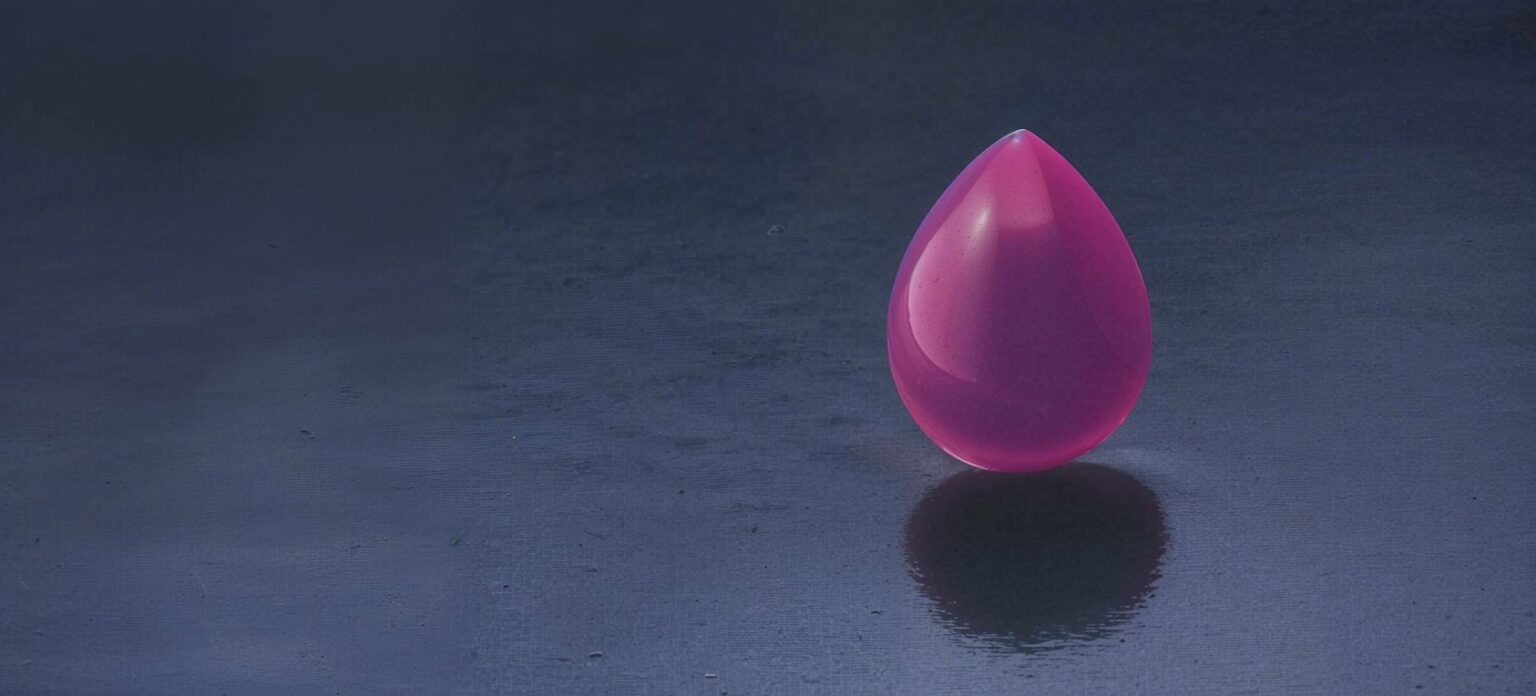What’s in a name, you ask? Quite a lot when it comes to gems. Try getting excited about the likes of zoisite or grossular garnet. But rechristen these two gems as “tanzanite” and “tsavorite” respectively and you’ve done for gem marketing the equivalent of changing the name “Frances Gumm” to “Judy Garland.” “Tanzanite” and “tsavorite” are the trade names Tiffany’s taught the world to use back in 1968 and 1970 when it debuted these two East African gems to wild acclaim.
So it was hardly surprising that when sugilite, a new gem from South Africa, made its American market entry in 1984, it had as many trade names as a generic drug. Aware the name “sugilite” doesn’t conjure up any of the gem’s attributes—such as its majestic deep purple color and its remote single origin in the southern Africa’s Kalahari desert—marketers dubbed it variously “wesselite,” “royal azel,” “royal lavulite” and “cybelene.”
It never caught on under any of these aliases.
Nor has it yet to catch on under its real name.
Sugilite’s trouble, one a catchy cognomen can’t fix, is that it is more mineral than gem, suitable for cabochon cutting rather than faceting (although some material has been faceted). With the exception of lapiz lazuli and black onyx, mainstream jewelers tend to ignore opaque and semi-translucent minerals, leaving them to rockhound and craft shops.
May we suggest a second look? Sugilite has three big pluses going for it: beauty, affordability and a helluva story line.
We start with the last.
Manganese by-product
Sugilite is named after Professor Ken-ichi Sugi, a Japanese petrologist (a specialist in rock formation and composition) who first discovered it in the southwestern Japan in 1944. Although later noted in India, the first sugilite suitable for jewelry use wasn’t recovered until 1979 from a South African manganese mine in the Kalahari desert near Botswana. Later the new gem’s most ambitious marketing tool. Los Angeles- based I. Kurgen, would dub sugilite “royal azel” after the mine’s nearest town, Hotazel (jokingly pronounced “hot as hell” by locals since daytime summer temperatures there reach 100 F).
The area in which sugilite is found is known as the Kuruman manganese field. Although this region is dotted with manganese mines, only one, the Wessels mine, produces gem sugilite. To honor its sole source, some early sellers called the newcomer “wesselite.”
According to Joel Arem’s Color Encyclopedia of Gemstones (1989), sugilite was discovered in the Wessels mine around 1975 but ignored until 1979 because it occurred in lower-grade ore thought unworthy of attention. Some time after miners began working this ore, probably in 1980, they hit a mass of sugilite weighing between 10 and 12 tons. By sheer size alone, the deposit forced consideration of sugilite as a gem material. Miners removed this mass from its host rock and stockpiled it while the mine’s owners put out feelers among gem dealers.
Those who experimented with the new material found that while occasional sections of rough lent themselves to faceting, sugilite was for the most part opaque and therefore best suited to cabochon cutting. Better cabs generally ranged in deep purple color from lavender to magenta and usually featured some banding. “Perfectly uniform color is rare,” explains Dave Cordry, The Sugilite Source, Phoenix.
As meaningful supplies of sugilite started to come on the market, definite color preferences emerged. The most desirable: rare reddish-purple hues. But even when a far more common blueish-purple, the color generally merited the adjective “royal” used to describe very fine amethyst color. That’s why, in the mid-’80s, gem dealer Randy Polk began marketing sugilite as “royal lavulite,” a name meant to evoke its rich lavender color. The trouble with this name,” comments Cordry, “is that lavulite sounds more like lava than lavender.”
Sugilite and ice
Without a doubt, the most imaginative and extensive marketing of sugilite as a jewelry gem was undertaken in 1984-85 by I. Kurgen, a South African diamond firm that had opened an office in Los Angeles. Sensing that sugilite stood its best chance of mainstream acceptance as a jewelry center stone surrounded by diamonds, the firm created a striking line of sugilite and diamond rings, pendants and earrings with retail prices beginning at $300, then promoted it as “Royal Azel” jewelry.
While I. Kurgen maintains that its sugilite popularization campaign succeeded, it is no longer actively marketing the gem. One can only wonder what would have happened if the firm had waited a year or two until consciousness of colored stones, amethyst especially, had reached its current level.
In any case, I. Kurgen deserves a lot of the credit for sugilite’s following among retailers. Perhaps the best, albeit backhanded, tribute to the firm’s success in stimulating demand for this gem is the recent flood of ersatz sugilite, commonly used in Indian jewelry, says Cordry. “It’s plastic and has a gorgeous purple color that is identical to the gem,” he says. “Fortunately, it’s easy to detect. Just heat a pin with a match, then touch it to the back of a piece and see if it melts.”
Why, pray tell, would anyone substitute plastic for a gem that is often available for just dollars per carat in cabochon form? The fact that the simulatnt costs just pennies per carat is a large part of the answer. But the growing scarcity of fine-color material plays a role, too.
Much of this lesser color material, it turns out, is a second type of gem sugilite found in the Wessels mine, a fact the Gemological Institute of America (GIA) discovered and reported in what is still their definitive study of this gem, published in the summer 1987 issue of Gems and Gemology. According to GIA, some sugilite pieces are predominantly sugilite while others are strong mixtures of sugilite with chalcedony (a quartz). It is the purer material (GIA calls it “manganoan sugilite”) that exhibits deeper, more uniform color and the quartz-sugilite that exhibits lighter, more mottled color. Cutters have apparently used most of the pure material and are left with the less pure grades.
As consolation, quartz sugilite has a better hardness than the manganoan variety—6-6½ versus 5½-6. But no matter which type is used, it will almost certainly need re-polishing every few years if set in a ring that is worn every day.
Please note: this profile was originally published in 1992 in Modern Jeweler’s ‘Gem Profiles/2: The Second 60’, written by David Federman with photographs by Tino Hammid.
The sugilite shown in the header image is courtesy of The Sugilite Source, Phoenix.






